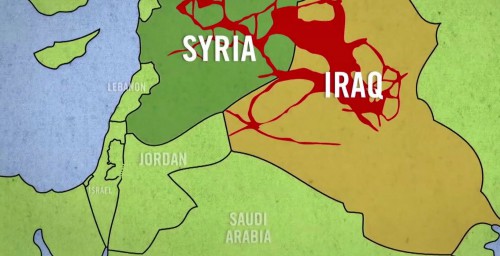The so-called Islamic State released a video on Tuesday, just days after the beheading of the Japanese hostage Kenji Goto, showing the Jordanian pilot Muath al- Kasasbeh being burned alive in a steel cage.
Kasasbeh, who was the first pilot from the U.S. led coalition against the Islamic State, also known as ISIS, was taken by the militants in December while making a bombing run, according to NBC News. Since then, there were numerous threats by ISIS to murder him if the Jordanian government refused to agree to their demands to release Sajida al-Rishawi, a terrorist who played a huge role in the wedding reception bombing in Jordan in 2005.
However, the Jordanian government had made it clear that they were willing to swap the prisoner who is on the death row with the pilot held by ISIS if they could provide proof that he is still alive.
But that hope was short-lived when the video of the pilot being burned alive surfaced online. CNN News reports that the Jordanian military spokesperson Mamudouh Al Amri claims this gruesome killing was performed on Jan. 3, weeks before ISIS began to make demands for the prisoner swap.
After the Jordanians heard the news of the pilot’s death, hundreds took to the streets to protest ISIS, calling on the Jordanian government to take drastic measures against the terrorist group.
CNN News reports the Jordanian government has vowed an “earthshaking response” to the terrorist group, issuing a warning of severe punishments to follow.
Few hours after the Jordanian government issued such statements, CNN News reported the prisoner ISIS had requested to be released had been executed along with Ziad Karbouli, another death row inmate who was convicted of possessing explosives and acts of terrorism that resulted in death.
CNN News reports that as part of severe punishment that the Jordanian government promised, it launched airstrikes against ISIS in Syria. The Jordanian government has said they will remain committed to the U.S led coalition against ISIS, according to CNN.

The United Arab Emirates, on the other hand, has dropped out of the U.S led coalition after the Jordanian pilot was captured, claiming there aren’t enough search and rescue teams to rescue pilots in the event they are shot down.
According to CNN, the U.S. has vowed to increase search and rescue teams in the area but insists this action does not come as a result of the claim of insufficient search and rescue teams made by the UAE.
Meanwhile, CBS New reports that U.S Defense chief nominee Ashton Carter, in an appearance before the Senate Armed Services Committee on Wednesday on the subject of his nomination, stated the U.S must ensure a “lasting defeat” of ISIS forces in Iraq and Syria. He said should he be approved as the U.S Defense Chief, he is willing to examine the current approach to the fight against ISIS and make any changes where necessary.
ISIS has a significant presence on social media. It uses social media to recruit people and to spread their propaganda.
In the days after the pilot’s captivity, there was a massive Twitter campaign suggesting ways by which the pilot should be killed. Some suggested that he should be put in a cage with hungry crocodiles, others suggested he should be burnt alive or put in a pit with snakes and scorpions.
In light of this attack, there have been growing concerns ISIS are becoming more powerful because of the fear they instill in people with their actions. Taylor Magnussen, a freshman and government major said though that might be the case, “the United States and other nations can push back against them” by giving more thought to how they deal with hostage situations or respond with military action.







